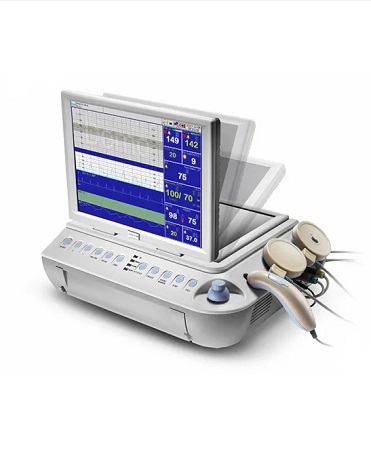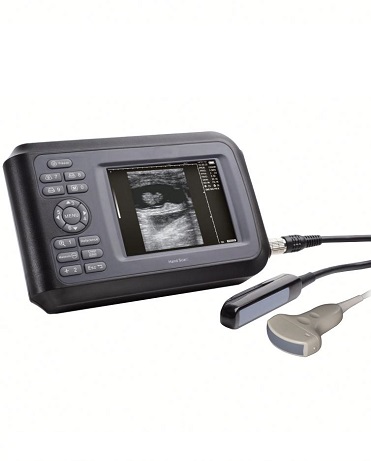-
Using Video Laryngoscopes in the Medical Industry: An Overview
Video laryngoscopes are an increasingly popular tool in the medical industry, used primarily to assist with intubation procedures. These devices provide a clearer view of the airway, making the process safer and more efficient, especially in difficult cases. Here, we will explore the basics of video laryngoscopes, how they are used, and the benefits of their use in medical settings. Understanding Video Laryngoscopes Video laryngoscopes are a type of medical device that utilizes a camera and an LED light to transmit real-time images of the airway to a screen. This allows medical professionals to more clearly visualize the structures of the throat and mouth, making intubation procedures easier to perform. There are two types of video laryngoscopes: direct and indirect. Direct video laryngoscopes are placed directly into the patient’s mouth, while indirect video laryngoscopes use a blade to lift the tongue and allow for better visualization. Using Video Laryngoscopes for Intubation Intubation is a medical procedure in which a tube is inserted into a patient’s airway, usually to help with breathing or to administer anesthesia. The use of a video laryngoscope during intubation can greatly improve the safety and effectiveness of the procedure. With a clearer view of the airway,...
-
Latest News in China’s Medical Industry – October 2023
Introduction: In October 2023, the medical industry in China witnessed significant developments and advancements, showcasing the country’s commitment to improving healthcare services and addressing emerging challenges. This article provides a comprehensive overview of the latest news and noteworthy events that took place in China’s medical sector during this period. National Health Initiatives: The Chinese government launched several national health initiatives aimed at enhancing healthcare access and quality. A prominent initiative focused on strengthening primary healthcare services in rural areas, ensuring that citizens in remote regions have access to essential medical facilities and qualified healthcare professionals. Additionally, efforts were made to improve healthcare infrastructure, promote health education, and implement digital health solutions to streamline healthcare delivery. Technological Innovations: October 2023 witnessed notable technological innovations in China’s medical industry. Artificial intelligence (AI) and big data analytics continued to play a significant role in advancing healthcare services. Cutting-edge AI algorithms were developed to aid in the early detection and diagnosis of diseases, facilitating timely treatment interventions. Furthermore, telemedicine platforms expanded their reach, connecting patients in remote areas with healthcare specialists through virtual consultations, thus improving healthcare accessibility. Pharmaceutical Advancements: China’s pharmaceutical sector experienced noteworthy advancements during October 2023. Several indigenous pharmaceutical companies made...
-

Doppler Fetal Heart Rate Can Detect Twins
Fetal Doppler can monitor fetal movement and fetal heart rate to reflect the condition of the fetus in the mother’s body. After 35 weeks of pregnancy, pregnant women should perform fetal heart rate monitoring when they go to the hospital for an obstetric examination every week. However, this can only be monitored at a specific time period and cannot be monitored as needed, so expectant mothers are also required to develop the habit of detecting fetal movement by themselves every day. Can Fetal Doppler Detect Twins? Yes, because Doppler fetal heart rate is judged by detecting fetal heart sounds, so it can detect twins or multiples, which is a very useful monitoring instrument. What is the principle of Doppler fetal heart rate? Doppler fetal heart rate monitor is mainly an electronic instrument used for fetal heart rate monitoring. Generally, maternity hospitals provide fetal heart rate monitoring. The Doppler fetal heart rate monitor is more commonly used in the market, and the ultrasound Doppler technology is mostly used, and the ultrasound dose is small. The Doppler fetal heart rate meter calculates the number of heartbeats in each cardiac cycle of the fetal heart rate, and traces it on the chart in...
-

Ultrasonic examination method of B-ultrasound machine for large animals
Ultrasonography of animals is the second most commonly used imaging format in veterinary practice. It uses ultrasound waves in the 1.5-15 megahertz (MHz) frequency range to create images of animal structures based on echo patterns reflected from the tissues and organs to be imaged. Several types of image formats can be displayed. B-mode grayscale scanning is one that creates images of actual anatomy. The sound beam is generated by a transducer that is in contact with the transmission gel and coupled to the animal through acoustic transmission. Ultrashort pulses of sound are introduced into the animal, and the transducer switches to receive mode. Echoes occur as the beam velocity changes when the beam is shifted from one density of tissue to another, even though this change occurs on an almost microscopic level. The greater the speed change, the greater the echo intensity. A small portion of these echoes is reflected back to the transducer, which then converts the echo’s energy into electrical impulses that are recorded by a computer in the ultrasound machine. The strength of the echo, the time it takes for the echo after the pulse, and the direction of the sound beam sent are all recorded. The...
-
How to choose ultrasound probe?
Probes can be varied according to the shapes. Each type has a different specialty, their shape and the crystal formation differentiate the way they display images, and the frequencies that they operate on. ●Linear probe – this has flat array and appearance. The piezoelectric crystals in linear probe are arranged in a linear formation which creates a straight sound wave. The probe has higher frequency (5MHz – 13MHz) which provides better resolution and less penetration. Therefore, this probe is ideal for imaging superficial structures. This can be applied to wide variety of uses, such as vascular, breast, thyroid, tendon examinations. ●Convex probe – Convex probes are otherwise called as curvilinear probe have curved array that allows for a wider field of view. The piezoelectric crystals are arranged in a curvilinear formation, The frequency ranges between (2MHz – 5MHz), which have higher penetration. These probe are great for more in-depth examinations, widely used for abdominal screening and fetal studies, vascular, OB/GYN, nerve and musculoskeletal examinations. Because, the sound waves produces wider and deeper view due to the curvilinear arrays of crystals. ●Endocavity probe – The endocavity probe is been examined close to the view of the anatomical site, This is otherwise...
-
Ultrasound may be an early marker of vascular disease
A new mouse study reports that ultrasound examinations prior to the onset of symptoms can promote early detection of vascular disease. The results of the study were published in the Ultrasound Journal. A team led by the University of Leicester’s School of Life Sciences collaborated with researchers at Leicester Hospital to perform longitudinal ultrasound studies on two vascular diseases, aortic aneurysm and atherosclerosis (AAA) mouse models to track Disease progression. Ultrasonic scanning can detect a decrease in vascular function earlier, which may be used in the future to test new therapies to alleviate disease symptoms. As part of the study, mice were anesthetized and their physiological status was closely monitored during ultrasound imaging. Ultrasound imaging is commonly used to diagnose and monitor a variety of diseases, including AAA, and can provide fast, real-time information about the ability of arteries to dilate and contract, often referred to as arterial dilation, of heart beat and relaxation. A decrease in arterial dilation indicates an increase in arterial wall stiffness and can serve as an early marker of vascular changes associated with cardiovascular disease. The first author’s analysis in the University of Leicester’s Justyna Janus paper revealed changes in the blood vessels of mice...
If you have any question, please contact us



